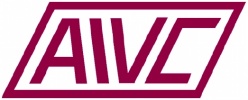The 35th AIVC conference : 'Ventilation and airtightness in transforming the building stock to high performance' was held in Poznan, Poland together with the 4th TightVent and the 2nd venticool conferences in September 24-25, 2014.
Scope
Many countries are developing ambitious plans to reduce drastically energy use and greenhouse gas emissions in the building sector. This sector offers great abatement potential especially in existing buildings—as new constructions represent each year typically less than 1‐2% of the building stock—as well as in the management of space conditioning, as 30% to 70% of buildings’ energy use is dissipated through ventilation and infiltration.
Building renovation entails a number of challenges to meet high energy performance as well as good indoor climate conditions. Provisions must be made to ensure good indoor air quality by limiting indoor contaminant sources and providing fresh air bearing in mind potential issues with the quality of the outdoor air. The need for active cooling should be minimized by addressing the management of solar loads, airflow rates and thermal mass. Another challenge lies in the reduction of infiltration losses through the building envelope, which is often a major barrier to achieve low‐energy buildings.
While a number of initiatives have triggered significant progress on these issues for new buildings, the existing stock is lagging behind due to specific technical and policy constraints. Therefore, this conference aimed to focus on ventilation and airtightness challenges in transforming the building stock to high performance, with the following major themes:
- Thermal comfort and ventilative cooling—i.e., the application of ventilation airflow rates to reduce the cooling loads in buildings;
- Air infiltration through leaks in the building envelope and ductwork;
- Ventilation in relation to Indoor Air Quality and health.
Conference organizers
The conference was organised by:
- the International Network on Ventilation and Energy Performance (INIVE) on behalf of the Air Infiltration and Ventilation Centre (AIVC), TightVent Europe (the Building and Ductwork Airtightness Platform), and venticool (the international platform for ventilative cooling); and
- the Poznań University of Technology.
Since 1980, the annual AIVC conferences have been the meeting point for presenting and discussing major developments and results regarding infiltration and ventilation in buildings. AIVC combines forces with the TightVent Europe and venticool platforms aiming at facilitating exchanges and progress on airtightness and ventilative cooling issues, which are major topics of this conference.
Conference concept
The conference consisted of 3 parallel sessions largely devoted to:
- Thermal comfort and ventilative cooling
- Air infiltration through leaks in the building envelope and ductwork
- Ventilation in relation to Indoor Air Quality and health
The conference consisted of a mixture of:
- Well‐prepared structured workshops focused on the conference topics;
- Presentations on invitation;
- Presentations from call for papers.
Topics of the conference
For ventilative cooling aspects:
- Potential for ventilative cooling strategies
- Ventilative cooling in energy performance regulations
- Design approaches for ventilative cooling and case studies — Integrated design
- Thermal comfort and ventilation
- Active facades
For airtightness related aspects:
- Building and ductwork airtightness in existing buildings
- Infiltration measurement techniques and IR thermography
- Quality schemes for airtightness testers
- Durability of building and ductwork airtightness
- Energy and IAQ impact of envelope and ductwork leakage
For ventilation in relation to IAQ and health aspects:
- IAQ impacts from outdoor sources
- Demand‐controlled ventilation
- Humidity control and moisture damage
- Ventilation in renovated buildings
- Characterization of air cleaning technologies
Other aspects relevant to the conference include:
- Multi‐family buildings
- Quality of ventilation systems
- Fan energy use
- Innovative ventilation concepts and combined systems
- Controls and user interaction
For further information please visit: https://www.aivc.org/event/24-25-september-2014-conference-poznan-35th-aivc-conference




